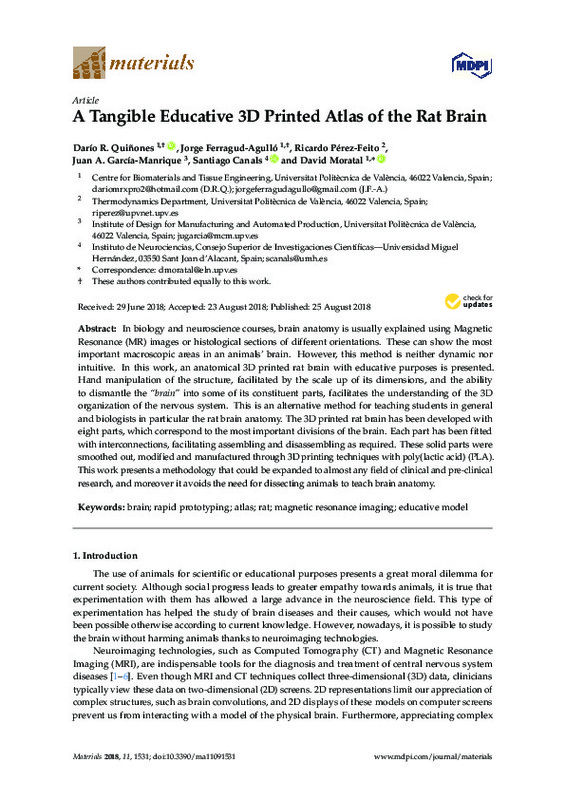Perrin, R. J., Fagan, A. M., & Holtzman, D. M. (2009). Multimodal techniques for diagnosis and prognosis of Alzheimer’s disease. Nature, 461(7266), 916-922. doi:10.1038/nature08538
Linden, D. E. J. (2012). The Challenges and Promise of Neuroimaging in Psychiatry. Neuron, 73(1), 8-22. doi:10.1016/j.neuron.2011.12.014
Teipel, S., Drzezga, A., Grothe, M. J., Barthel, H., Chételat, G., Schuff, N., … Fellgiebel, A. (2015). Multimodal imaging in Alzheimer’s disease: validity and usefulness for early detection. The Lancet Neurology, 14(10), 1037-1053. doi:10.1016/s1474-4422(15)00093-9
[+]
Perrin, R. J., Fagan, A. M., & Holtzman, D. M. (2009). Multimodal techniques for diagnosis and prognosis of Alzheimer’s disease. Nature, 461(7266), 916-922. doi:10.1038/nature08538
Linden, D. E. J. (2012). The Challenges and Promise of Neuroimaging in Psychiatry. Neuron, 73(1), 8-22. doi:10.1016/j.neuron.2011.12.014
Teipel, S., Drzezga, A., Grothe, M. J., Barthel, H., Chételat, G., Schuff, N., … Fellgiebel, A. (2015). Multimodal imaging in Alzheimer’s disease: validity and usefulness for early detection. The Lancet Neurology, 14(10), 1037-1053. doi:10.1016/s1474-4422(15)00093-9
Woo, C.-W., Chang, L. J., Lindquist, M. A., & Wager, T. D. (2017). Building better biomarkers: brain models in translational neuroimaging. Nature Neuroscience, 20(3), 365-377. doi:10.1038/nn.4478
Ivanov, I. (2017). The Neuroimaging Gap - Where do we go from Here? Acta Psychopathologica, 03(03). doi:10.4172/2469-6676.100090
Kastrup, O., Wanke, I., & Maschke, M. (2005). Neuroimaging of infections. NeuroRX, 2(2), 324-332. doi:10.1602/neurorx.2.2.324
Preece, D., Williams, S. B., Lam, R., & Weller, R. (2013). «Let»s Get Physical’: Advantages of a physical model over 3D computer models and textbooks in learning imaging anatomy. Anatomical Sciences Education, 6(4), 216-224. doi:10.1002/ase.1345
Zheng, Y., Yu, D., Zhao, J., Wu, Y., & Zheng, B. (2016). 3D Printout Models vs. 3D-Rendered Images: Which Is Better for Preoperative Planning? Journal of Surgical Education, 73(3), 518-523. doi:10.1016/j.jsurg.2016.01.003
Li, Z., Li, Z., Xu, R., Li, M., Li, J., Liu, Y., … Chen, Z. (2015). Three-dimensional printing models improve understanding of spinal fracture—A randomized controlled study in China. Scientific Reports, 5(1). doi:10.1038/srep11570
Kettenbach, J., Wong, T., Kacher, D., Hata, N., Schwartz, R. ., Black, P. M., … Jolesz, F. . (1999). Computer-based imaging and interventional MRI: applications for neurosurgery. Computerized Medical Imaging and Graphics, 23(5), 245-258. doi:10.1016/s0895-6111(99)00022-1
Schwarz, A. J., Danckaert, A., Reese, T., Gozzi, A., Paxinos, G., Watson, C., … Bifone, A. (2006). A stereotaxic MRI template set for the rat brain with tissue class distribution maps and co-registered anatomical atlas: Application to pharmacological MRI. NeuroImage, 32(2), 538-550. doi:10.1016/j.neuroimage.2006.04.214
Marro, A., Bandukwala, T., & Mak, W. (2016). Three-Dimensional Printing and Medical Imaging: A Review of the Methods and Applications. Current Problems in Diagnostic Radiology, 45(1), 2-9. doi:10.1067/j.cpradiol.2015.07.009
Michalski, M. H., & Ross, J. S. (2014). The Shape of Things to Come. JAMA, 312(21), 2213. doi:10.1001/jama.2014.9542
Ratto, M., & Ree, R. (2012). Materializing information: 3D printing and social change. First Monday, 17(7). doi:10.5210/fm.v17i7.3968
Rengier, F., Mehndiratta, A., von Tengg-Kobligk, H., Zechmann, C. M., Unterhinninghofen, R., Kauczor, H.-U., & Giesel, F. L. (2010). 3D printing based on imaging data: review of medical applications. International Journal of Computer Assisted Radiology and Surgery, 5(4), 335-341. doi:10.1007/s11548-010-0476-x
Mannoor, M. S., Jiang, Z., James, T., Kong, Y. L., Malatesta, K. A., Soboyejo, W. O., … McAlpine, M. C. (2013). 3D Printed Bionic Ears. Nano Letters, 13(6), 2634-2639. doi:10.1021/nl4007744
Guy, J. R., Sati, P., Leibovitch, E., Jacobson, S., Silva, A. C., & Reich, D. S. (2016). Custom fit 3D-printed brain holders for comparison of histology with MRI in marmosets. Journal of Neuroscience Methods, 257, 55-63. doi:10.1016/j.jneumeth.2015.09.002
Friston, K. J., Holmes, A. P., Worsley, K. J., Poline, J.-P., Frith, C. D., & Frackowiak, R. S. J. (1994). Statistical parametric maps in functional imaging: A general linear approach. Human Brain Mapping, 2(4), 189-210. doi:10.1002/hbm.460020402
Flandin, G., & Novak, M. J. U. (2013). fMRI Data Analysis Using SPM. fMRI, 51-76. doi:10.1007/978-3-642-34342-1_6
Mueller, B. (2012). Additive Manufacturing Technologies – Rapid Prototyping to Direct Digital Manufacturing. Assembly Automation, 32(2). doi:10.1108/aa.2012.03332baa.010
Gulanová, J., Kister, I., Káčer, N., & Gulan, L. (2018). A Comparative Study of various AM Technologies Based on Their Accuracy. Procedia CIRP, 67, 238-243. doi:10.1016/j.procir.2017.12.206
D’Urso, P. S., Barker, T. M., Earwaker, W. J., Bruce, L. J., Atkinson, R. L., Lanigan, M. W., … Effeney, D. J. (1999). Stereolithographic biomodelling in cranio-maxillofacial surgery: a prospective trial. Journal of Cranio-Maxillofacial Surgery, 27(1), 30-37. doi:10.1016/s1010-5182(99)80007-9
Müller, A., Krishnan, K. G., Uhl, E., & Mast, G. (2003). The Application of Rapid Prototyping Techniques in Cranial Reconstruction and Preoperative Planning in Neurosurgery. Journal of Craniofacial Surgery, 14(6), 899-914. doi:10.1097/00001665-200311000-00014
Guarino, J., Tennyson, S., McCain, G., Bond, L., Shea, K., & King, H. (2007). Rapid Prototyping Technology for Surgeries of the Pediatric Spine and Pelvis. Journal of Pediatric Orthopaedics, 27(8), 955-960. doi:10.1097/bpo.0b013e3181594ced
Canstein, C., Cachot, P., Faust, A., Stalder, A. F., Bock, J., Frydrychowicz, A., … Markl, M. (2008). 3D MR flow analysis in realistic rapid-prototyping model systems of the thoracic aorta: Comparison with in vivo data and computational fluid dynamics in identical vessel geometries. Magnetic Resonance in Medicine, 59(3), 535-546. doi:10.1002/mrm.21331
Giesel, F. L., Mehndiratta, A., von Tengg-Kobligk, H., Schaeffer, A., Teh, K., Hoffman, E. A., … Wild, J. M. (2009). Rapid Prototyping Raw Models on the Basis of High Resolution Computed Tomography Lung Data for Respiratory Flow Dynamics. Academic Radiology, 16(4), 495-498. doi:10.1016/j.acra.2008.10.008
Malyala, S. K., Ravi Kumar, Y., & Rao, C. S. P. (2017). Organ Printing With Life Cells: A Review. Materials Today: Proceedings, 4(2), 1074-1083. doi:10.1016/j.matpr.2017.01.122
Foster, K. R. (2016). 3-Dimensional Printing in Medicine: Hype, Hope, and the Challenge of Personalized Medicine. Philosophy and Engineering, 211-228. doi:10.1007/978-3-319-45193-0_16
[-]









